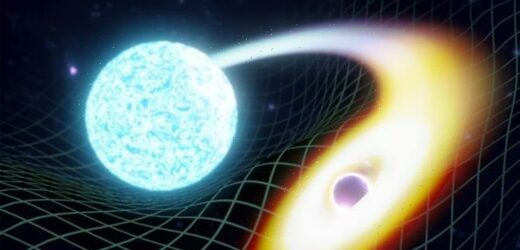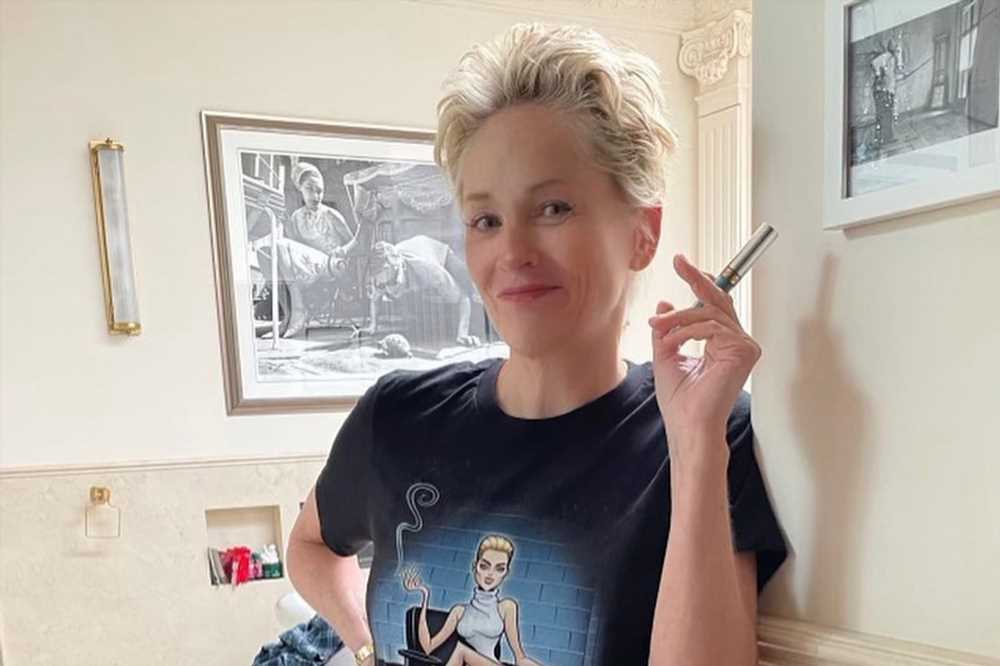Black hole: Brian Cox says we 'know nothing' about the centre
When you subscribe we will use the information you provide to send you these newsletters. Sometimes they’ll include recommendations for other related newsletters or services we offer. Our Privacy Notice explains more about how we use your data, and your rights. You can unsubscribe at any time.
The head-on collision of cosmic proportions sent ripples through the fabric of time and space that were detected on Earth in January 2020. An international collaboration of scientists has presented the discovery today (June 29) after recording the merger’s aftermath using a global network of gravitational wave detectors. Even more remarkably, a second black hole-neutron star collision was detected just 10 days after the first event.
The discoveries will help scientists better understand how these binary systems – a black hole and neutron star pair – take shape.
The findings were published in the journal Astrophysical Letters.
Dr Patricia Schmidt, of the University of Birmingham’s Institute for Gravitational Wave Astronomy, said: “With these extraordinary discoveries gravitational-wave astronomy has reached yet another milestone.
“This is the strongest evidence for the existence of binaries consisting of a neutron star and a black hole we have to date, finally filling this observational gap.
“These detections have strong repercussions for our understanding of the formation of such mixed binaries and the role they potentially play as a source of gamma-ray bursts.”
The discovery presents the world’s first direct evidence of this new astronomical phenomenon.
In the past, gravitational wave detectors – some of the most sensitive instruments in the world – have only detected the aftermath of a black hole merging with another black hole or a neutron star merging with another neutron star.
Just like a pebble dropped in a pond, the collisions of stellar bodies send out gravitational waves rippling out into space.
The ripples then travel unimaginable distances along the fabric of space-time – a phenomenon Albert Einstein predicted in 1916.
But the existence of gravitational waves was not confirmed until late 2015 when the LIGO and Virgo collaborations detected for the first time the aftermath of two black holes colliding some 1.3 billion years ago.
Neutron star collision creates huge gravitational waves
LIGO and Virgo were now responsible for detecting the collision of two bodies some 900 million light-years away.
The detectors picked up the aftermath of a neutron star circling a black hole faster and faster until it crashed into the well of gravity.
And the discoveries did not end there because the Advanced LIGO (ALIGO) detector in the US and Advanced Virgo detector in Italy detected a second such collision just days later.
According to Professor Alberto Vecchio, Director of the University of Birmingham’s Institute for Gravitational Wave Astronomy, scientists have been anxiously waiting for this sort of discovery for a “long while now”.
Up until now, there has been no real compelling evidence to prove the collisions take place – the phenomenon was only theorised upon.
analyse and interpret the data, as well as developing some of the algorithms used to search for the gravitational waves’ source.
More than 1,300 scientists from 18 countries are involved in the LIGO collaboration, including scientists from 11 UK universities.
And the future looks bright: The UK’s Science and Technology Facilities Council (STFC) has allocated £9.4million to UK universities and institutes for gravitational wave research.
Professor Grahame Blair, STFC Executive Director of Programmes, said: “From first witnessing these ripples in space-time a few short years ago, we are now seeing a rich harvest of new observations coming in.
“This is the first time scientists have ever witnessed an event of this kind, and it goes to show why continuing to fund this research is vital in enhancing our understanding of the Universe.”
Ian Harry, a Senior Lecturer in the Institute for Cosmology and Gravitation at the University of Portsmouth, is positive this is only the first of many exciting discoveries waiting to be made.
He said: “These are the first clear observations of systems containing a neutron star and a black hole.
“Such systems have long been conjectured but now we know for sure that they exist.
“We will observe many more neutron stars colliding with black holes in the coming years as our observatories continue to improve.”
Source: Read Full Article






